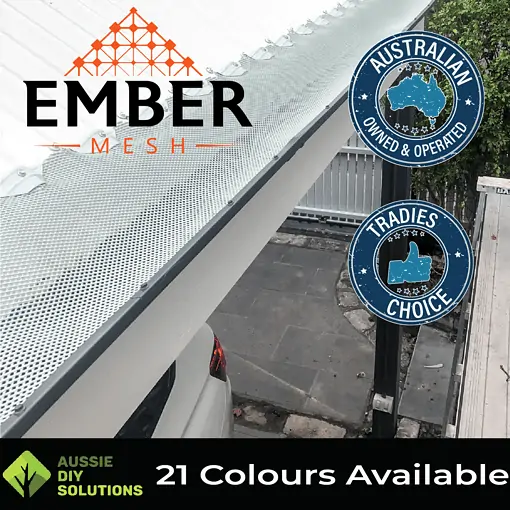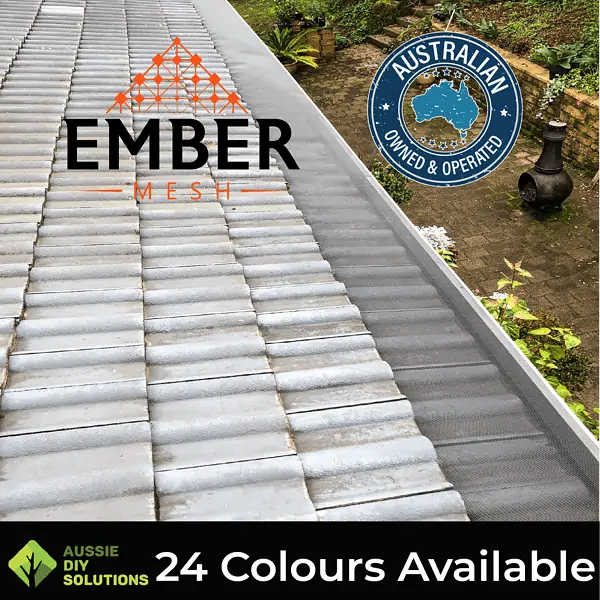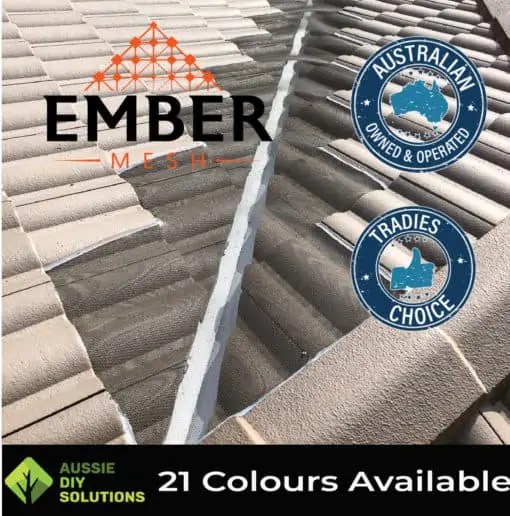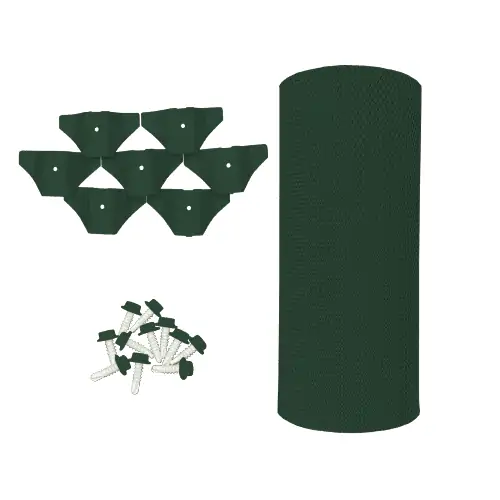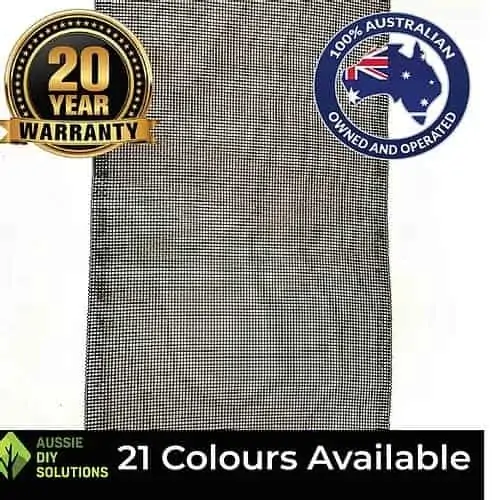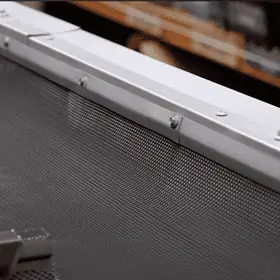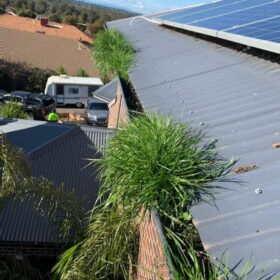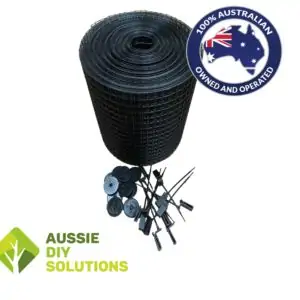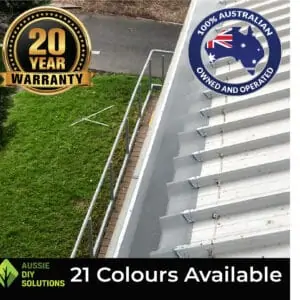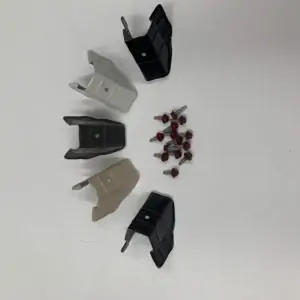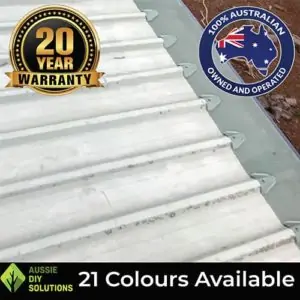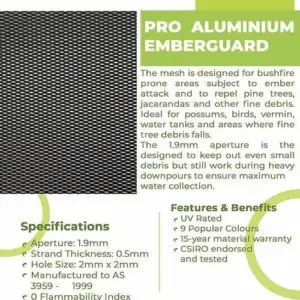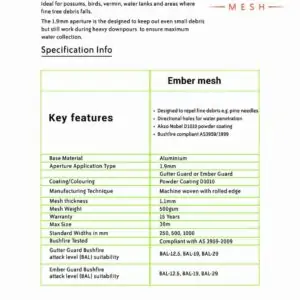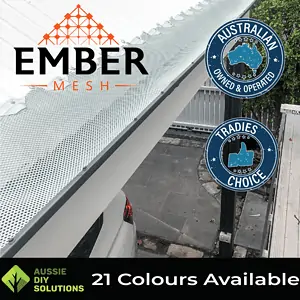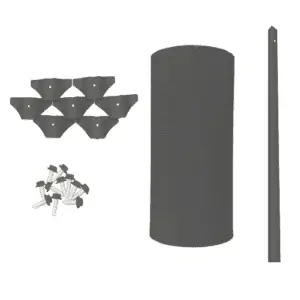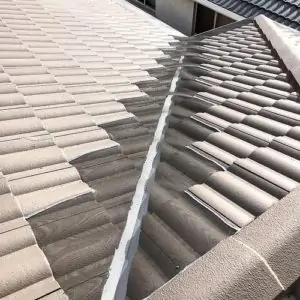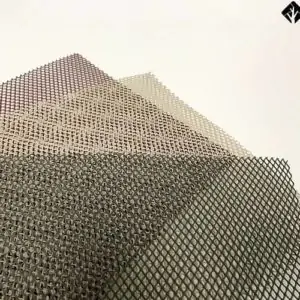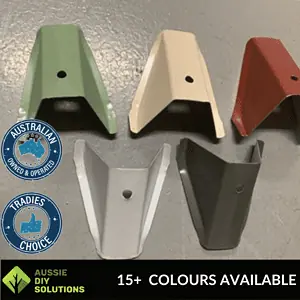As bushfires continue to threaten homes and communities in Australia, homeowners are looking for ways to protect their properties from ember attacks.
So, is ember guard worth it for all homeowners? It depends. Ember guards are worth it for homeowners in BAL-rated areas to protect gutters against fine debris, such as pine needles. For other gutter protection needs, a gutter guard mesh is more suitable.
Ember guards are specialised gutter guards designed to ember-proof homes by preventing burning embers and debris from entering roof spaces and gutters during bushfires. In this article, we’ll explore the features, benefits, and considerations of DIY ember guard kits to help homeowners make an informed decision.
What is Ember Guard?
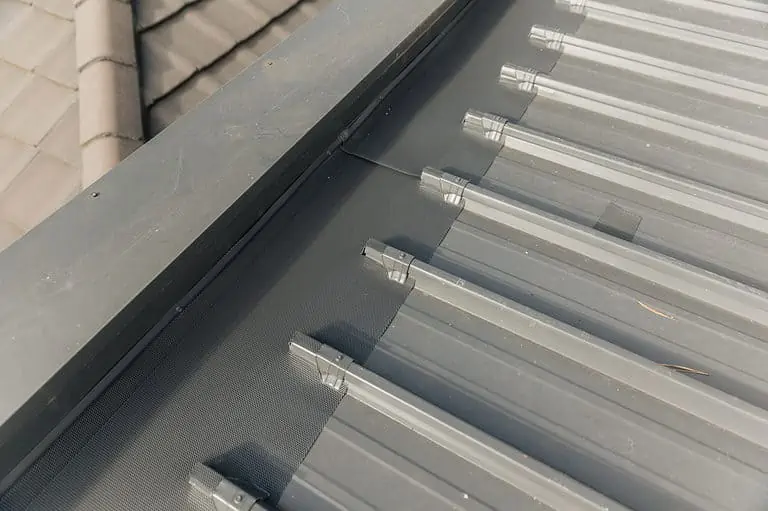
An Ember guard is a gutter guard specifically designed to prevent ember attacks during bushfires. It typically features an ember guard mesh that covers gutters and roof spaces, preventing burning embers from entering and potentially igniting flammable materials. Ember guard products are typically made from non-combustible materials and have been tested to comply with Australian bushfire safety standards.
What is an Ember Attack?
An ember attack is a common ignition in areas prone to bushfires. It occurs when windborne embers land on clogged roofs, gutters, or other combustible materials around a home. These burning embers can ignite flammable materials and cause spot fires, even in areas some distance from the main fire front.
Ember attack is a significant hazard in bushfire-prone areas and can pose a serious risk to homes and communities. Preventative ember-proof measures, using ember guards and maintaining clear gutters, can help to reduce the risk of ember attack and increase the chances of a home surviving a bushfire.
Ember Guard Mesh vs Gutter Guard Mesh

One common question homeowners have when considering ember guard is how it differs from regular gutter guard mesh. While both types of mesh can prevent burning embers from entering gutters, ember guard mesh is designed to be more fire-resistant and to prevent embers from entering roof spaces. Ember guard-compliant mesh is made from materials Colorbond steel, and aluminium, which are less likely to ignite than plastic or nylon mesh.
A gutter guard is designed to prevent debris from entering gutters, which can help to maintain clear water flow during rain events. By preventing debris buildup, gutter guards can reduce the risk of gutters becoming clogged and overflowing, which can cause damage to roofs, walls, and foundations. On the other hand, an ember guard is primarily designed to prevent embers and debris from entering gutters and roof spaces during bushfires.
While an ember guard can also be useful in preventing small debris from clogging gutters, it is not explicitly designed to increase water flow with its smaller hole size. Therefore, if the primary concern is maintaining clear water flow in gutters, using a gutter guard product is likely more effective than an ember guard product.
Ember Guard Compliant Mesh for Each BAL Rating
In Australia, homes are classified according to their Bushfire Attack Level (BAL) rating, which indicates the level of risk from bushfires in a particular area. Each BAL rating has specific requirements for ember guard products, which homeowners should comply with when building or renovating their homes. The greatest protection for homeowners in BAL-rated areas is to be intrinsically ember-proof.
For example:
- BAL-Low: No ember guard protection specifications.
- BAL-12.5: Mesh aperture size 2mm or smaller for gutters and valleys in steel or aluminium ember guards.
- BAL-19: Mesh aperture size 2mm or smaller for gutters, valleys, roof vents, in steel or aluminium ember guards.
- BAL-29: Mesh aperture size 2mm or smaller for gutters, valleys, roof vents, and skylights in steel or aluminium ember guards.
- BAL-40: Mesh aperture size 2mm or smaller for gutters, valleys, roof vents, skylights, and external vents in steel or bronze ember guards.
- BAL-FZ: Mesh aperture size of 2mm or smaller for gutters, valleys, roof vents, skylights, external vents, and underfloor spaces in steel or bronze ember guards.
It’s important to note that these ember guard requirements are subject to change, and aperture size may vary based on local regulations and building codes. Homeowners should consult with their builders or local authorities to ensure they comply with their area’s requirements.
Ember Guard Compliant Mesh for Each BAL Rating
While an ember guard is primarily designed to prevent ember attacks during bushfires, it can also be useful in preventing smaller debris like pine needles from clogging gutters. When gutters become clogged, they can pose a fire risk by trapping debris and igniting embers. By using an ember guard to prevent debris from entering gutters in the first place, homeowners can reduce this risk and maintain clear gutters year-round.
Here’s a list of some other tree types in Australia that can produce fine debris that ember mesh is useful to protect against, including:
- Eucalyptus trees: Eucalyptus trees are native to Australia and are found in many parts of the country. They are known for shedding bark and leaves, creating fine debris that can clog gutters and pose a fire risk.
- Pine trees: Pine trees are commonly used in landscaping and are found in many parts of Australia. They produce needles that can create fine debris, particularly when shed in large quantities.
- Grevillea trees: Grevillea trees are native to Australia and are commonly found in gardens and parks. They produce fine, needle-like leaves that can create debris buildup in gutters and roofs.
- Melaleuca trees: Melaleuca trees are also native to Australia and are commonly found in wetlands and coastal areas. They produce fine, needle-like leaves that can create debris buildup in gutters and roofs.
- Casuarina trees: Casuarina trees, also known as she-oaks, are found in many parts of Australia and produce fine, needle-like leaves that can create debris buildup in gutters and roofs.
- Jacaranda trees: Jacaranda trees are popular ornamental trees in many parts of Australia, particularly in urban areas. They produce fine, fern-like leaves that can create debris buildup in gutters and roofs.
- Wattle trees: Wattle trees, also known as acacias, are native to Australia and are found in many parts of the country. They produce fine, needle-like leaves and small branches that can create debris buildup in gutters and on roofs.
It’s important for homeowners to be aware of the types of trees and vegetation around their properties and to take steps to maintain clear gutters and prevent debris buildup, particularly during bushfire season. Using gutter guards like ember guards can be a helpful preventative measure for reducing fire risk.
Other Considerations
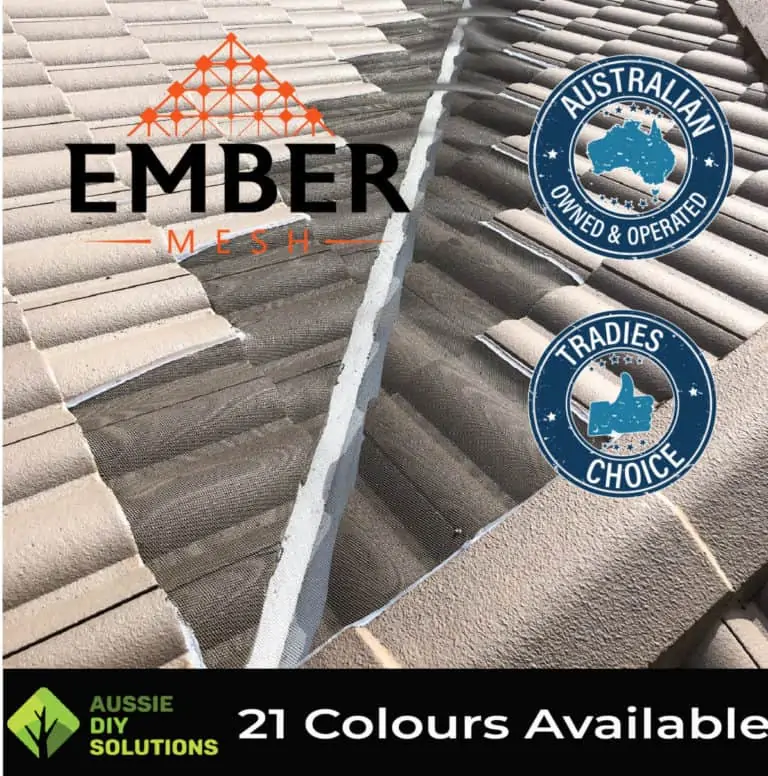
There are a few other factors to consider when considering whether to invest in DIY gutter guard kits. First, it’s essential to consider the cost of the product and the installation process. While DIY gutter guard kits can be less expensive than professional installation, they also require more effort and expertise to install correctly. Additionally, homeowners should consider the maintenance and cleaning requirements for their chosen gutter guard product and the warranty and return policies offered by the manufacturer.
Is Gutter Guard Worth It?
While an ember guard is a specialised product designed for bushfire protection, regular gutter guards can also be useful for preventing debris from entering gutters. Gutter guards can help reduce the fire risk by preventing debris buildup and reducing the need for gutter cleaning. However, it’s important to consider the specific needs of your property when deciding whether to invest in gutter guards or ember guards. For example, homeowners in areas with a high risk of bushfires or clogged gutters with fine debris will benefit more from ember guards. In contrast, those in areas with less risk or minimal debris buildup may find that regular gutter guards are sufficient. If you live in an area with high bushfire risk, installing ember guards is best.
An ember guard can be a valuable addition to a homeowner’s bushfire protection strategy, particularly for those living in BAL-rated areas where an ember guard is specified for new builds. Ember guards can also be useful for homeowners with clogged gutters with small debris like pine needles. However, it’s essential for homeowners to carefully consider their specific needs and the requirements of their property before investing in gutter guards or ember guards.
For those who decide that an ember guard is a right choice, there are a variety of DIY gutter guard kits available on the market that can make installation more affordable and accessible. When choosing a DIY gutter guard kit, homeowners should look for products that comply with Australian bushfire safety standards, have a proven track record of effectiveness, and offer clear instructions for installation and maintenance.
By taking the time to carefully consider the features, benefits, and considerations of gutter guard products like ember guard, homeowners can make an informed decision about the best way to protect their homes from the threat of bushfires. Whether investing in ember guards, regular gutter guards, or a combination of both, taking proactive steps to reduce the fire risk can provide peace of mind and added protection for years.
At Aussie DIY Solutions, we offer a wide range of gutter guards to suit every possible DIY budget. We provide gutter guard kits & ember guard kits for corrugated, tiled, trimdek® and Klip-Lok® roofs and kits for box gutters and roof valleys. We also provide solar panel mesh for solar panel protection from birds.

